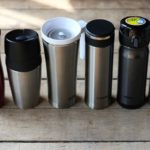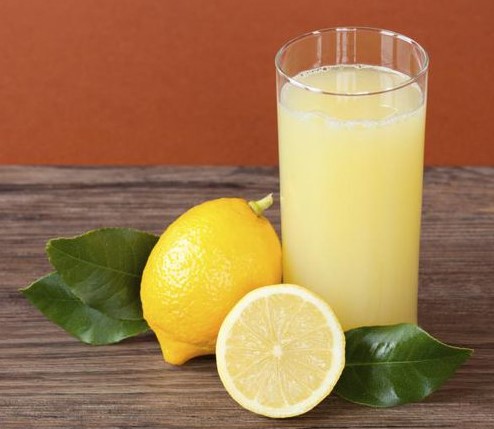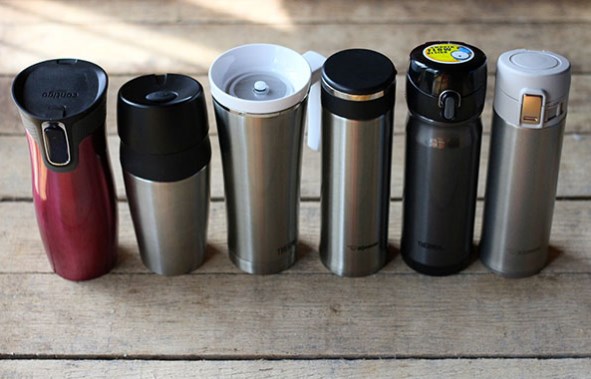How to make a thermos with your own hands
There is a large number of choice of thermoses, varying both in volume and price. Why make a homemade one? Even high-quality factory products sometimes fail, and at the most inopportune moment.
You are about to put the thermos in your backpack when you notice that the outer flask has become hot. This is a sure sign of a violation of the thermal insulation properties. You'll have to make it from improvised materials!
The content of the article
How to make a thermos
 Let's figure out how factory products are designed. Their design makes it difficult to exchange heat between the stored object and the external environment. The temperature of a body is related to the rate of vibration of its molecules.
Let's figure out how factory products are designed. Their design makes it difficult to exchange heat between the stored object and the external environment. The temperature of a body is related to the rate of vibration of its molecules.
Heat can be transferred either by the collision of molecules (thermal conduction) or by infrared radiation.
Modern thermoses work on the principle of a Dewar flask, invented at the end of the 19th century. They consist of two metal vessels inserted into one another, between which air is evacuated. The metal surface reflects infrared radiation, and the vacuum provides low thermal conductivity.
Our homemade thermos is also based on the Dewar design, only instead of a vacuum there will be insulation, and instead of metal vessels there will be plastic bottles. To reflect infrared radiation, we use household aluminum foil in which we wrap the inner vessel.
Insulation
 The key element of the design is insulation. What can be used as insulation:
The key element of the design is insulation. What can be used as insulation:
- Free newspapers with advertisements;
- Foam chips;
- Polyurethane foam;
- Polyurethane foam;
- Wool;
- Wood shavings;
- Toilet paper, etc.
The simplest insulation can be balls made from pieces of free newspapers. The disadvantage of newspapers is their poor tolerance of contact with water. Foam sources: packaging of household appliances, vegetable trays. It is easy to make crumbs out of it.
Rolled polyurethane foam is also used as packaging material. Sold in hardware stores. Polyurethane foam is the same polyurethane foam, but in an aerosol can. It is an almost ideal material, but it has an unpleasant property: it expands so much that the inner vessel can become deformed, and if it is a glass bottle, it can burst. The plastic one must first be filled with water so that it does not lose its shape.
Attention! It is better not to combine glass bottles with polyurethane foam.
The main criterion for choosing insulation is the presence of a particular material. We assume that the design is disposable (or close to it) and manufacturing costs should be minimal.
Inner vessel material
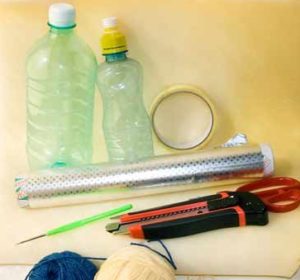 The advantage of a thermos made from two plastic bottles is its phenomenal impact resistance. They can even play football. This is where the advantages end. Do not pour boiling water into a plastic bottle.
The advantage of a thermos made from two plastic bottles is its phenomenal impact resistance. They can even play football. This is where the advantages end. Do not pour boiling water into a plastic bottle.
Firstly, it is deformed, and secondly, harmful substances are released. The maximum water temperature should not exceed approximately 80 degrees.
To compensate for this disadvantage, you can use a glass bottle. It is better to pour boiling water into it in two stages.First, pour a small amount and shake, and then add the remaining amount. Otherwise there is a chance that it will burst.
Assembling a thermos
- Let's take two plastic bottles with relatively thick walls: half a liter and a liter, or 1.5 and 3 liters. It is better to choose an internal one with a long narrow neck. This is more beneficial for thermal insulation.
Important! A thermos made from plastic bottles is intended only for cold drinks.
- Carefully cut off the neck of the outer one using a knife. The diameter of the resulting hole should be slightly smaller than the cork of the inner bottle. Then we make small longitudinal cuts so that the inner one fits in tightly.
- The outer bottle is cut into 2 parts just below the middle. Cut at a slight angle to the axis of symmetry. This will make it easier for the cut pieces to fit into each other during assembly.
- Wrap the inner bottle with foil. We fix it with tape.
- We insert the inner bottle into the upper part of the outer one.
- We fill the internal volume with insulation. The easiest way to do this is when it is crushed into small pieces (in the case of newspapers, roll the scraps into balls), or when using polyurethane foam.
Important! The insulation must be compacted, otherwise the inner bottle will dangle and rotate relative to the outer one.
- We insert the parts of the outer bottle into each other and glue them with tape.
- We tape over the outlet of the neck of the inner bottle so that water does not get into the insulation area.
- Assembly is complete. All that remains is to carry out the tests.
Thermos test
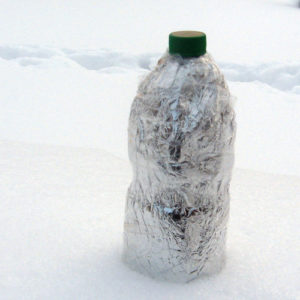 A thermos made from 1- and 3-liter bottles with insulation made from newspaper balls was filled with water at a temperature of 80 degrees and placed in the cold.
A thermos made from 1- and 3-liter bottles with insulation made from newspaper balls was filled with water at a temperature of 80 degrees and placed in the cold.
Two hours later the temperature dropped to 40 degrees.We can conclude that a homemade thermos retains heat about 9 times worse than a nameless Chinese one.
Simpler design
Let's say you only have a 0.5 liter bottle. Wrap it in foil. We put on two down socks or wrap them in a woolen scarf. We put on a black plastic bag and cover it with tape. The result will be a thermos from the “better than nothing” series.
What is needed to make a thermos
- For the first design:
- A pair of plastic bottles (0.5 and 1, or 1.5 and 3 liters);
- Aluminium foil;
- Insulation (see above);
- Scotch;
- Scissors;
- Preferably a knife.
- For the second design:
- Bottle 0.5 l;
- Two down socks or a wool scarf;
- Black package;
- Scotch;
- Scissors.
- "Thermos" from a flask
If you have a small flask for alcoholic drinks, then in winter it can serve as a good thermos. The volume of such flasks rarely exceeds 250 ml. However, when thirst overcomes, even a glass of water can significantly alleviate your situation.
Pour warm water into the flask, but not boiling water, so as not to get burned. We put it in a shirt or vest pocket with many pockets. We put on a sweater and a winter jacket on top. Thanks to its flat shape, concealed carrying does not pose any particular problems. The water temperature will always be equal to your body temperature, which is very good in the cold season. You won't be able to get warm, but you'll quench your thirst easily.
Important! Before use, make sure the flask does not leak.
We found out that making a primitive thermos at home is not so difficult, but such designs are significantly inferior to industrial designs in terms of heat-insulating properties. It is advisable to make them only if it is not possible to purchase a factory product.


